Nationwide Susceptibility Mapping of Landslides in Kenya Using the Fuzzy Analytic Hierarchy Process Model
Abstract
1. Introduction
2. Study Area
3. Materials
3.1. Historical Landslides in Kenya
3.2. Landslide Contributing Factors (LCFs)
3.2.1. Mean Annual Precipitation (MAP)
3.2.2. Topographic Factors
3.2.3. Hydrological Factors
3.2.4. Environmental Factors
4. Methodology
4.1. The Theoretical Background of the Conventional AHP
- Step 1: Dividing the decision problem into a hierarchical structure
- Step 2: Constructing the pairwise comparison matrix
- Step 3: Calculate the weights of each decision element and check its consistency
- Step 4: Hierarchically aggregate weights from all “criterion” levels
4.2. Triangular Fuzzy Number (TFN)
- Summation of two TFNs:
- Subtraction of a TFN from another TFN:
- Multiplication of two TFNs:
- Multiplication of a number and a TFN:
- Division of a TFN by another TFN:
- Reciprocal of a TFN:
4.3. Integration of the AHP and TFN
4.4. Accuracy Validation
4.5. Flowchart of Conducting the LSM
5. Results
5.1. Weights of LCFs and Their Subclasses
5.2. Landslide Susceptibility Maps
5.3. Accuracy Validation
6. Discussion
7. Conclusions
Author Contributions
Funding
Acknowledgments
Conflicts of Interest
Appendix A
| LCF | Landuse | AMP | Aspect | Soil Texture | TWI | SPI | Curvature | Altitude | Landform | Slope | w |
|---|---|---|---|---|---|---|---|---|---|---|---|
| Landuse | 1 | 1/2 | 2 | 1/2 | 1/2 | 1/2 | 1/4 | 1/2 | 1/2 | 1/4 | 0.0455 |
| AMP | 2 | 1 | 2 | 3 | 3 | 3 | 2 | 3 | 4 | 3 | 0.2073 |
| Aspect | 1/2 | 1/2 | 1 | 1/2 | 1/2 | 1/2 | 1/2 | 2 | 1/2 | 1/3 | 0.0552 |
| Soil Texture | 2 | 1/3 | 2 | 1 | 2 | 2 | 1/3 | 1/5 | 3 | 1/4 | 0.0776 |
| TWI | 2 | 1/3 | 2 | 1/2 | 1 | 1 | 1/2 | 2 | 3 | 1/4 | 0.0786 |
| SPI | 2 | 1/3 | 2 | 1/2 | 1 | 1 | 1/2 | 1/2 | 2 | 1/5 | 0.0615 |
| Curvature | 4 | 1/2 | 2 | 3 | 2 | 2 | 1 | 2 | 3 | 2 | 0.1527 |
| Altitude | 2 | 1/3 | 1/2 | 5 | 1/2 | 2 | 1/2 | 1 | 2 | 1/4 | 0.0914 |
| Landform | 2 | 1/4 | 2 | 1/3 | 1/3 | 1/2 | 1/3 | 1/2 | 1 | 1/2 | 0.0498 |
| Slope | 4 | 1/3 | 3 | 4 | 4 | 5 | 1/2 | 4 | 2 | 1 | 0.1803 |
| LCF | Subclass | Subclass Indicator | C1 | C2 | C3 | C4 | C5 | C6 | C7 | C8 | C9 | C10 | w |
|---|---|---|---|---|---|---|---|---|---|---|---|---|---|
| Altitude (CR = 0.0561) | <50 | C1 | 1 | 1/2 | 1 | 1/5 | 1/4 | 1 | 0.0835 | ||||
| 50–200 | C2 | 2 | 1 | 1/2 | 1/3 | 1/2 | 1 | 0.1094 | |||||
| 200–500 | C3 | 1 | 2 | 1 | 1/2 | 1 | 1/2 | 0.1385 | |||||
| 500–1000 | C4 | 5 | 3 | 2 | 1 | 2 | 2 | 0.3209 | |||||
| 1000–2000 | C5 | 4 | 2 | 1 | 1/2 | 1 | 2 | 0.2104 | |||||
| >2000 | C6 | 1 | 1 | 2 | 1/2 | 1/2 | 1 | 0.1374 | |||||
| Slope (CR = 0.0665) | 0–5 | C1 | 1 | 2 | 1 | 3 | 1/2 | 0.2357 | |||||
| 5–10 | C2 | 1/2 | 1 | 1 | 1/3 | 1/3 | 0.1010 | ||||||
| 10–15 | C3 | 1 | 1 | 1 | 1 | 1/3 | 0.1438 | ||||||
| 15–30 | C4 | 1/3 | 3 | 1 | 1 | 1/2 | 0.1634 | ||||||
| >30 | C5 | 2 | 3 | 3 | 2 | 1 | 0.3561 | ||||||
| Aspect (CR = 0.0983) | East | C1 | 1 | 1/3 | 1/2 | 2 | 2 | 1/3 | 1/2 | 1/2 | 1/4 | 0.0642 | |
| North | C2 | 3 | 1 | 3 | 2 | 2 | 2 | 1 | 1/3 | 1/2 | 0.1316 | ||
| South | C3 | 2 | 1/3 | 1 | 2 | 1 | 3 | 1/2 | 1/3 | 1/3 | 0.0894 | ||
| Flat | C4 | 1/2 | 1/2 | 1/2 | 1 | 1 | 1/3 | 1/3 | 1 | 1/4 | 0.0544 | ||
| Southeast | C5 | 1/2 | 1/2 | 1 | 1 | 1 | 1 | 1/3 | 2 | 1/2 | 0.0838 | ||
| Northeast | C6 | 3 | 1/2 | 1/3 | 3 | 1 | 1 | 1/2 | 1 | 1/3 | 0.0892 | ||
| Northwest | C7 | 2 | 1 | 2 | 3 | 3 | 2 | 1 | 1 | 1/2 | 0.1396 | ||
| Southwest | C8 | 2 | 3 | 3 | 1 | 1/2 | 1 | 1 | 1 | 1 | 0.1442 | ||
| West | C9 | 4 | 2 | 3 | 4 | 2 | 3 | 2 | 1 | 1 | 0.2036 | ||
| Curvature (CR = 0.0028) | Concave | C1 | 1 | 2 | 1/2 | 0.2970 | |||||||
| Flat | C2 | 1/2 | 1 | 1/3 | 0.1634 | ||||||||
| Convex | C3 | 2 | 3 | 1 | 0.5396 | ||||||||
| TWI (CR = 0.0261) | 6.8–9.87 | C1 | 1 | 2 | 1 | 1/2 | 1/2 | 0.1635 | |||||
| 9.88–12.06 | C2 | 1/2 | 1 | 1 | 1/2 | 1/2 | 0.1234 | ||||||
| 12.07–14.68 | C3 | 1 | 1 | 1 | 1/2 | 1/2 | 0.1394 | ||||||
| 14.69–18.73 | C4 | 2 | 2 | 2 | 1 | 1/2 | 0.2468 | ||||||
| 18.74–34.72 | C5 | 2 | 2 | 2 | 2 | 1 | 0.3270 | ||||||
| SPI (CR = 0.0738) | −2.41–4.61 | C1 | 1 | 1 | 1/2 | 1 | 1/2 | 0.1370 | |||||
| 4.62–6.66 | C2 | 1 | 1 | 1/2 | 1/2 | 1/3 | 0.1069 | ||||||
| 6.67–9.04 | C3 | 2 | 2 | 1 | 1/2 | 1 | 0.2152 | ||||||
| 9.05–12.28 | C4 | 1 | 2 | 2 | 1 | 1/3 | 0.2076 | ||||||
| 12.29–25.13 | C5 | 2 | 3 | 1 | 3 | 1 | 0.3333 | ||||||
| Soil Texture (CR = 0.0366) | Veryclayed | C1 | 1 | 2 | 3 | 2 | 3 | 0.3692 | |||||
| Clayed | C2 | 1/2 | 1 | 2 | 1 | 2 | 0.2085 | ||||||
| Loamy | C3 | 1/3 | 1/2 | 1 | 1/2 | 1/2 | 0.0958 | ||||||
| Sandy | C4 | 1/2 | 1 | 2 | 1 | 1 | 0.1796 | ||||||
| Water | C5 | 1/3 | 1/2 | 2 | 1 | 1 | 0.1469 | ||||||
| Landuse (CR = 0.0929) | Grassland | C1 | 1 | 1/3 | 1/2 | 1 | 2 | 1 | 1 | 3 | 3 | 2 | 0.1146 |
| Barrenland | C2 | 3 | 1 | 2 | 3 | 2 | 3 | 2 | 2 | 3 | 2 | 0.1905 | |
| Bushland | C3 | 2 | 1/2 | 1 | 2 | 1 | 2 | 3 | 2 | 2 | 2 | 0.1379 | |
| Waterbody | C4 | 1 | 1/3 | 1/2 | 1 | 1/2 | 1/2 | 2 | 1/2 | 1/3 | 1 | 0.0618 | |
| Plantation | C5 | 1/2 | 1/2 | 1 | 2 | 1 | 1 | 2 | 2 | 1/2 | 2 | 0.0990 | |
| Agriculture | C6 | 1 | 1/3 | 1/2 | 2 | 1 | 1 | 1 | 1 | 3 | 1 | 0.0891 | |
| Town | C7 | 1 | 1/2 | 1/3 | 1/2 | 1/2 | 1 | 1 | 2 | 2 | 1/3 | 0.0741 | |
| Forrest | C8 | 1/3 | 1/2 | 1/2 | 2 | 1/2 | 1 | 1/2 | 1 | 2 | 3 | 0.0854 | |
| Swamp | C9 | 1/3 | 1/3 | 1/2 | 3 | 2 | 1/3 | 1/2 | 1/2 | 1 | 1/2 | 0.0686 | |
| Woodland | C10 | 1/2 | 1/2 | 1/2 | 1 | 1/2 | 1 | 3 | 1/3 | 2 | 1 | 0.0790 | |
| Landform (CR = 0.0999) | Depression | C1 | 1 | 1/3 | 3 | 2 | 2 | 1/2 | 4 | 1/3 | 3 | 3 | 0.1192 |
| Escarpment | C2 | 3 | 1 | 3 | 2 | 2 | 1 | 4 | 1 | 3 | 2 | 0.1609 | |
| Water | C3 | 1/3 | 1/3 | 1 | 1/2 | 1/2 | 1/4 | 2 | 1/5 | 1 | 1/2 | 0.0433 | |
| Highland | C4 | 1/2 | 1/2 | 2 | 1 | 1 | 1/3 | 3 | 1/4 | 2 | 2 | 0.0794 | |
| Hill | C5 | 1/2 | 1/2 | 2 | 1 | 1 | 1/3 | 3 | 1/4 | 2 | 1/2 | 0.0693 | |
| Mountain | C6 | 2 | 1 | 4 | 3 | 3 | 1 | 3 | 1/2 | 3 | 1/2 | 0.1434 | |
| Plain | C7 | 1/4 | 1/4 | 1/2 | 1/3 | 1/3 | 1/3 | 1 | 1 | 1 | 2 | 0.0573 | |
| Ridges | C8 | 3 | 1 | 5 | 4 | 4 | 2 | 1 | 1 | 3 | 3 | 0.1989 | |
| Valleyfloor | C9 | 1/3 | 1/3 | 1 | 1/2 | 1/2 | 1/3 | 1 | 1/3 | 1 | 2 | 0.0518 | |
| Footslope | C10 | 1/3 | 1/2 | 2 | 1/2 | 2 | 2 | 1/2 | 1/3 | 1/2 | 1 | 0.0766 | |
| AMP (CR = 0.0931) | 0–400 | C1 | 1 | 1 | 2 | 2 | 1/3 | 2 | 1/2 | 0.1425 | |||
| 400–800 | C2 | 1 | 1 | 1 | 3 | 2 | 1/3 | 1/2 | 0.1350 | ||||
| 800–1200 | C3 | 1/2 | 1 | 1 | 1/2 | 1/2 | 1/3 | 1/3 | 0.0683 | ||||
| 1200–1600 | C4 | 1/2 | 1/3 | 2 | 1 | 1/2 | 1/3 | 1/3 | 0.0700 | ||||
| 1600–2000 | C5 | 3 | 1/2 | 2 | 2 | 1 | 1 | 1/3 | 0.1541 | ||||
| 2000–2400 | C6 | 1/2 | 3 | 3 | 3 | 1 | 1 | 1 | 0.1901 | ||||
| >2400 | C7 | 2 | 2 | 3 | 3 | 3 | 1 | 1 | 0.2400 | ||||
References
- Pham, B.T.; Shirzadi, A.; Bui, D.T.; Prakash, I.; Dholakia, M. A hybrid machine learning ensemble approach based on a radial basis function neural network and rotation forest for landslide susceptibility modeling: A case study in the Himalayan area. Int. J. Sediment Res. 2018, 33, 157–170. [Google Scholar] [CrossRef]
- Petley, D. Global patterns of loss of life from landslides. Geology 2012, 40, 927–930. [Google Scholar] [CrossRef]
- Brabb, E.E. Innovative Approaches to Landslide Hazard Mapping; Landslides: Toronto, ON, Canada, 1984; pp. 307–324. [Google Scholar]
- Razandi, Y.; Pourghasemi, H.R.; Neisani, N.S.; Rahmati, O. Application of analytical hierarchy process, frequency ratio, and certainty factor models for groundwater potential mapping using GIS. Earth Sci. Inform. 2015, 8, 867–883. [Google Scholar] [CrossRef]
- Son, J.; Suh, J.; Park, H.D. GIS-based landslide susceptibility assessment in Seoul, South Korea, applying the radius of influence to frequency ratio analysis. Environ. Earth Sci. 2016, 75, 310. [Google Scholar] [CrossRef]
- Dailey, L.A.; Fuhrmann, S. GIS-Based Logistic Regression for Landslide Susceptibility Analysis in Western Washington State. Int. J. Appl. Geospat. Res. 2017, 8, 1–19. [Google Scholar] [CrossRef]
- Hong, H.; Tsangaratos, P.; Ilia, I.; Liu, J.; Zhu, A.-X.; Chen, W. Application of fuzzy weight of evidence and data mining techniques in construction of flood susceptibility map of Poyang County, China. Sci. Total. Environ. 2018, 625, 575–588. [Google Scholar] [CrossRef] [PubMed]
- Shahri, A.A.; Spross, J.; Johansson, F.; Larsson, S. Landslide susceptibility hazard map in southwest Sweden using artificial neural network. Catena 2019, 183, 104225. [Google Scholar] [CrossRef]
- Zhou, S.; Fang, L. Support vector machine modeling of earthquake-induced landslides susceptibility in central part of Sichuan province. Geoenvironmental Disasters 2015, 2, 117. [Google Scholar] [CrossRef]
- Godt, J.; Baum, R.; Savage, W.; Salciarini, D.; Schulz, W.; Harp, E. Transient deterministic shallow landslide modeling: Requirements for susceptibility and hazard assessments in a GIS framework. Eng. Geol. 2008, 102, 214–226. [Google Scholar] [CrossRef]
- Oliveira, S.C.; Zêzere, J.L.; Lajas, S.; Melo, R. Combination of statistical and physically based methods to assess shallow slide susceptibility at the basin scale. Nat. Hazards Earth Syst. Sci. 2017, 17, 1091–1109. [Google Scholar] [CrossRef]
- Van Westen, C.J.; Castellanos, E.; Kuriakose, S.L. Spatial data for landslide susceptibility, hazard, and vulnerability assessment: An overview. Eng. Geol. 2008, 102, 112–131. [Google Scholar] [CrossRef]
- Reichenbach, P.; Rossi, M.; Malamud, B.D.; Mihir, M.; Guzzetti, F. A review of statistically-based landslide susceptibility models. Earth Sci. Rev. 2018, 180, 60–91. [Google Scholar] [CrossRef]
- Cabral, G.G.; Oliveira, A.L.I. Artificial Intelligence in Theory and Practice II; Springer Science & Business Media: Santiago, Chile, 2008; pp. 245–254. [Google Scholar]
- Barella, C.F.; Sobreira, F.G.; Zêzere, J.L. A comparative analysis of statistical landslide susceptibility mapping in the southeast region of Minas Gerais state. Bull. Int. Assoc. Eng. Geol. 2018, 78, 3205–3221. [Google Scholar] [CrossRef]
- Zhu, A.-X.; Miao, Y.; Wang, R.; Zhu, T.; Deng, Y.; Liu, J.; Yang, L.; Qin, C.-Z.; Hong, H. A comparative study of an expert knowledge-based model and two data-driven models for landslide susceptibility mapping. Catena 2018, 166, 317–327. [Google Scholar] [CrossRef]
- Davies, T.C. Landslide research in Kenya. J. Afr. Earth Sci. 1996, 23, 541–545. [Google Scholar] [CrossRef]
- Paron, P.; Olago, D.O.; Omuto, C.T. Kenya: A Natural Outlook: Geo-Environmental Resources and Hazards; Newnes: Boston, MA, USA, 2013; pp. 293–314. [Google Scholar]
- Waithaka, E.H.; Agutu, N.; Mbaka, J.G.; Ngigi, T.G.; Waithaka, E.H. Landslide scar/soil erodibility mapping using Landsat TM/ETM+ bands 7 and 3 normalised difference index: A case study of central region of Kenya. Appl. Geogr. 2015, 64, 108–120. [Google Scholar] [CrossRef]
- Ngecu, W.M.; Mathu, E.M. The El-Nino-triggered landslides and their socioeconomic impact on Kenya. Environ. Earth Sci. 1999, 38, 277–284. [Google Scholar] [CrossRef]
- Abella, E.A.C.; Van Westen, C.J. Generation of a landslide risk index map for Cuba using spatial multi-criteria evaluation. Landslides 2007, 4, 311–325. [Google Scholar] [CrossRef]
- Bălteanu, D.; Chendeş, V.; Sima, M.; Enciu, P. A country-wide spatial assessment of landslide susceptibility in Romania. Geomorphology 2010, 124, 102–112. [Google Scholar] [CrossRef]
- Sabatakakis, N.; Koukis, G.; Vassiliades, E.; Lainas, S. Landslide susceptibility zonation in Greece. Nat. Hazards 2012, 65, 523–543. [Google Scholar] [CrossRef]
- Margottini, C.; Canuti, P.; Sassa, K. Landslide Science and Practice: Volume 1: Landslide Inventory and Susceptibility and Hazard Zoning; Springer: Berlin/Heidelberg, Germany, 2013; pp. 303–311. [Google Scholar]
- Gaprindashvili, G.; Van Westen, C.J. Generation of a national landslide hazard and risk map for the country of Georgia. Nat. Hazards 2015, 80, 69–101. [Google Scholar] [CrossRef]
- Okalp, K.; Akgün, H. National level landslide susceptibility assessment of Turkey utilizing public domain dataset. Environ. Earth Sci. 2016, 75, 847. [Google Scholar] [CrossRef]
- Nsengiyumva, J.B.; Luo, G.; Nahayo, L.; Huang, X.; Cai, P. Landslide susceptibility assessment using spatial multi-criteria evaluation model in Rwanda. Int. J. Environ. Res. Public Health 2018, 15, 243. [Google Scholar] [CrossRef] [PubMed]
- Froude, M.J.; Petley, D.N. Global fatal landslide occurrence from 2004 to 2016. Nat. Hazards Earth Syst. Sci. 2018, 18, 2161–2181. [Google Scholar] [CrossRef]
- Broeckx, J.; Vanmaercke, M.; Duchateau, R.; Poesen, J. A data-based landslide susceptibility map of Africa. Earth Sci. Rev. 2018, 185, 102–121. [Google Scholar] [CrossRef]
- Alaska Satellite Facility. Available online: www.asf.alaska.edu/ (accessed on 13 December 2020).
- Van, N.T.H.; Van Son, P.; Khanh, N.H.; Binh, L.T. Landslide susceptibility mapping by combining the analytical hierarchy process and weighted linear combination methods: A case study in the upper Lo River catchment (Vietnam). Landslides 2016, 13, 1285–1301. [Google Scholar] [CrossRef]
- Sharma, L.P.; Patel, N.; Debnath, P.; Ghose, M. Assessing landslide vulnerability from soil characteristics—A GIS-based analysis. Arab. J. Geosci. 2011, 5, 789–796. [Google Scholar] [CrossRef]
- ISRIC-World Soil Information. Available online: www.data.isric.org (accessed on 13 December 2020).
- Reichenbach, P.; Mondini, A.C.; Rossi, M. The influence of land use change on landslide susceptibility zonation: The Briga catchment test site (Messina, Italy). Environ. Manag. 2014, 54, 1372–1384. [Google Scholar] [CrossRef]
- Roering, J. Tectonic geomorphology: Landslides limit mountain relief. Nat. Geosci. 2012, 5, 446–447. [Google Scholar] [CrossRef]
- Larsen, I.J.; Montgomery, D.R. Landslide erosion coupled to tectonics and river incision. Nat. Geosci. 2012, 5, 468–473. [Google Scholar] [CrossRef]
- ICPAC-Geoportal. Available online: www.geoportal.icpac.net/ (accessed on 13 December 2020).
- Saaty, T.L. A scaling method for priorities in hierarchical structures. J. Math. Psychol. 1977, 15, 234–281. [Google Scholar] [CrossRef]
- Saaty, T.L. Fundamentals of Decision Making and Priority Theory with AHP; RWS Publications: Pittsburg, CA, USA, 2000. [Google Scholar]
- Saaty, T.L. The Analytic Hierarchy Process: Planning, Priority Setting; Resource Allocation (Decision Making Series); McGraw-Hill: New York, NY, USA, 1980. [Google Scholar]
- Chang, D.Y. Applications of the extent analysis method on fuzzy AHP. Eur. J. Oper. Res. 1996, 95, 649–655. [Google Scholar] [CrossRef]
- Glade, T.; Crozier, M.J. A review of scale dependency in landslide hazard and risk analysis. Landslide Hazard Risk 2012, 75, 75–138. [Google Scholar] [CrossRef]
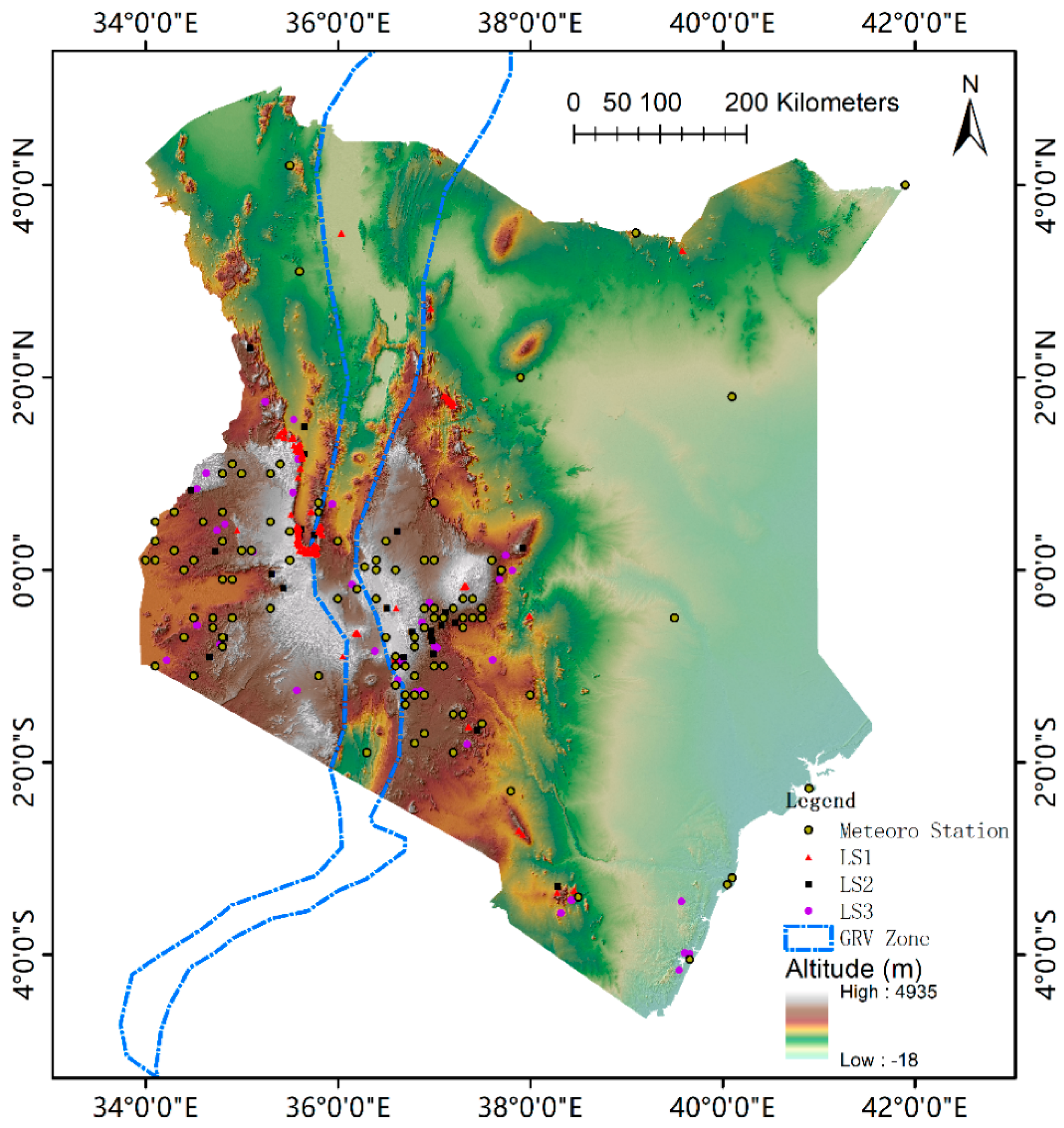
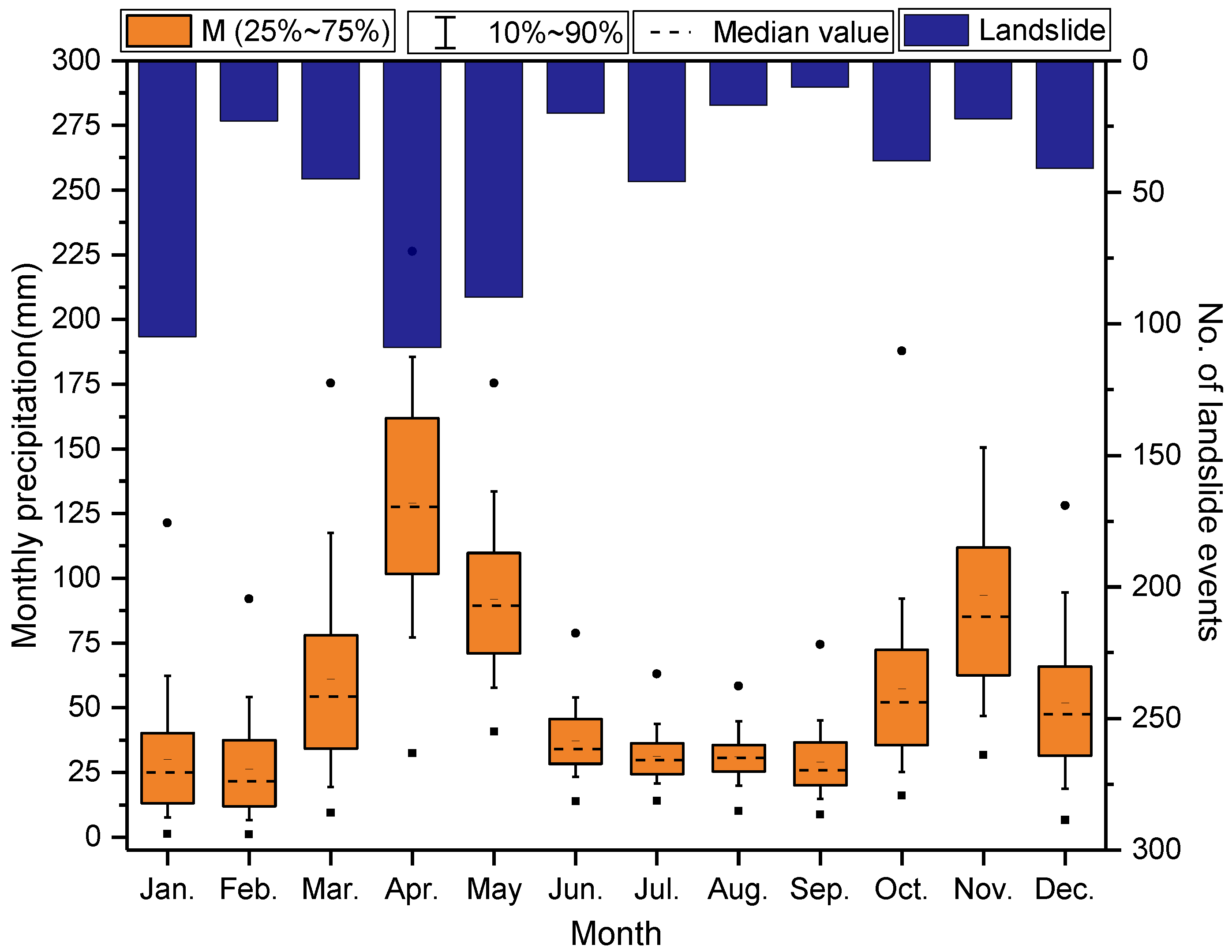
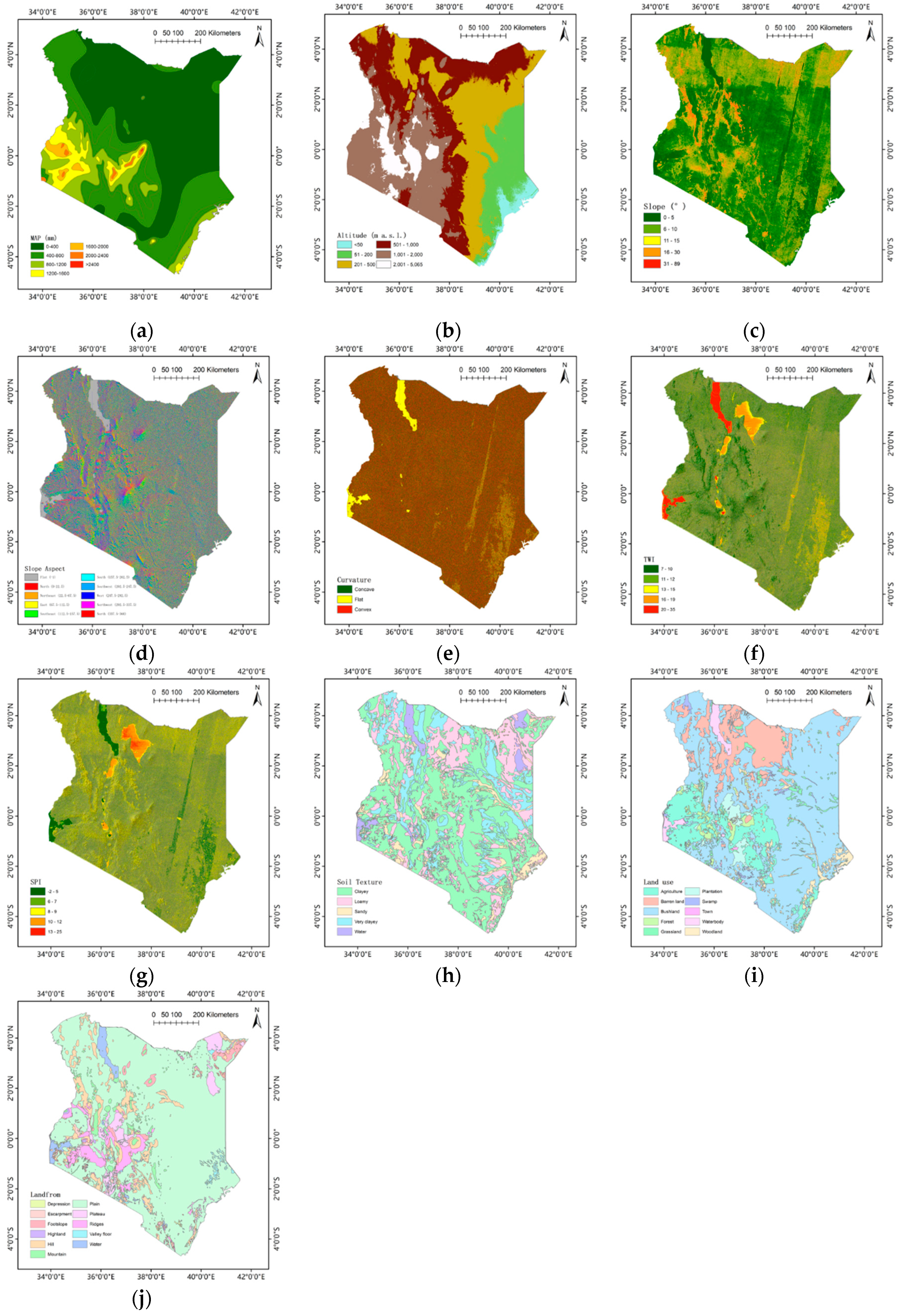
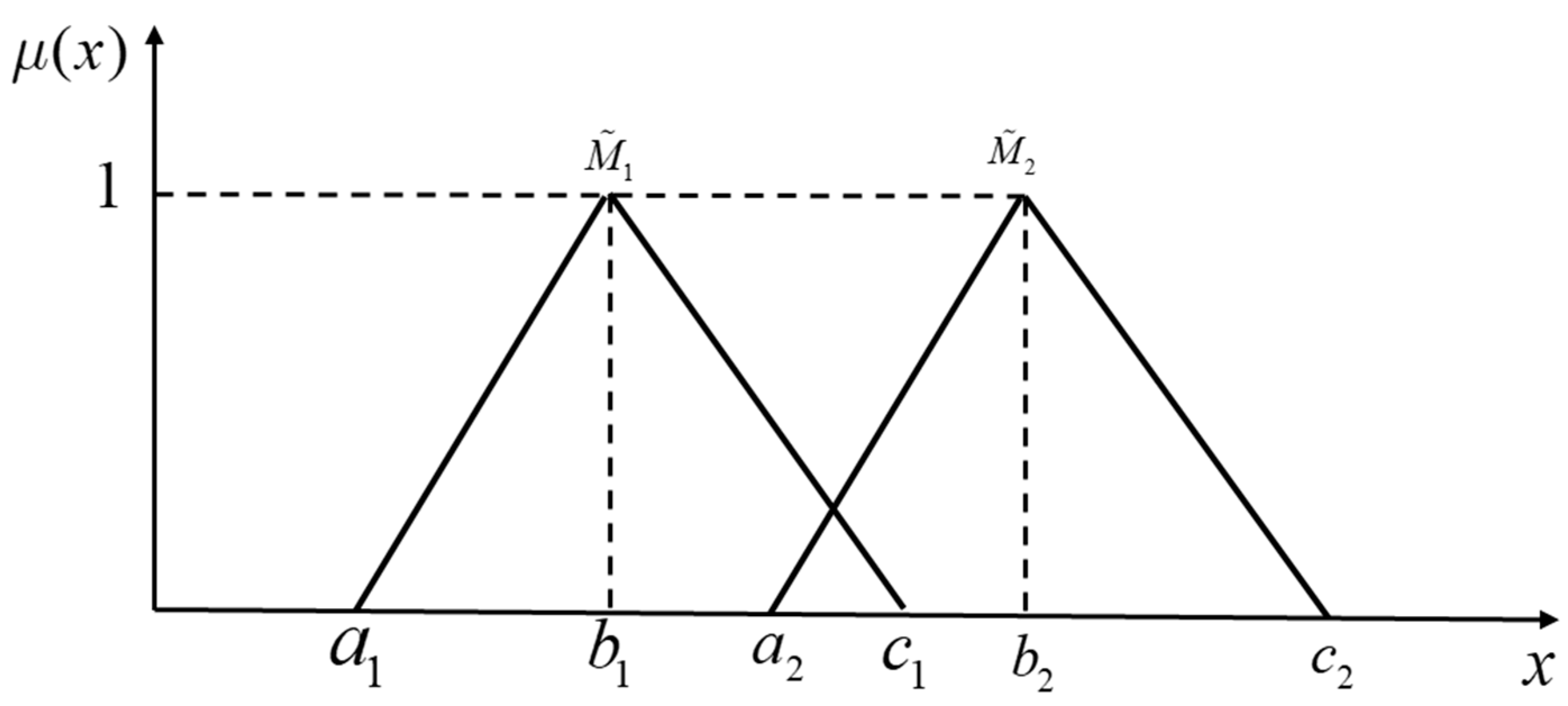

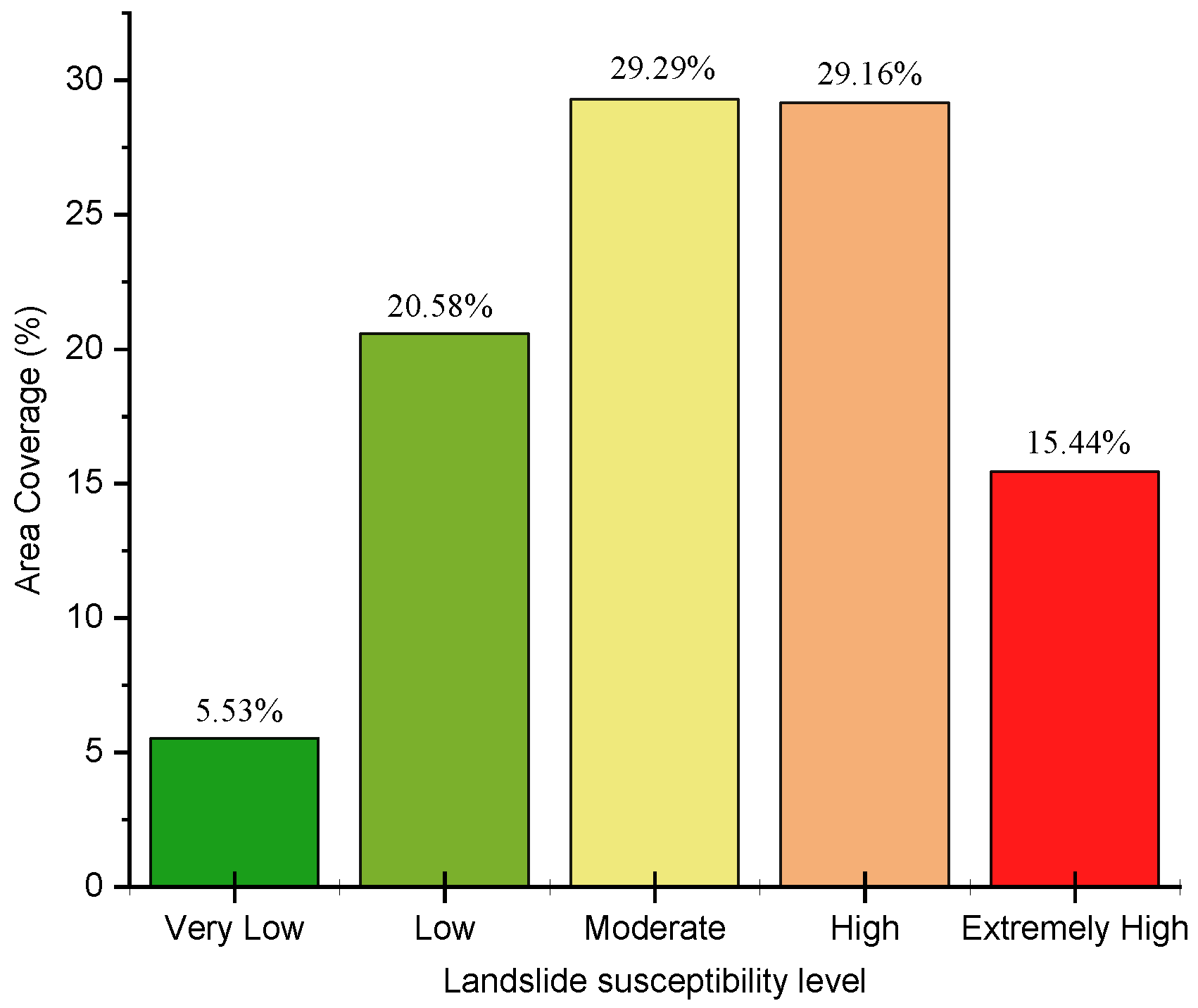
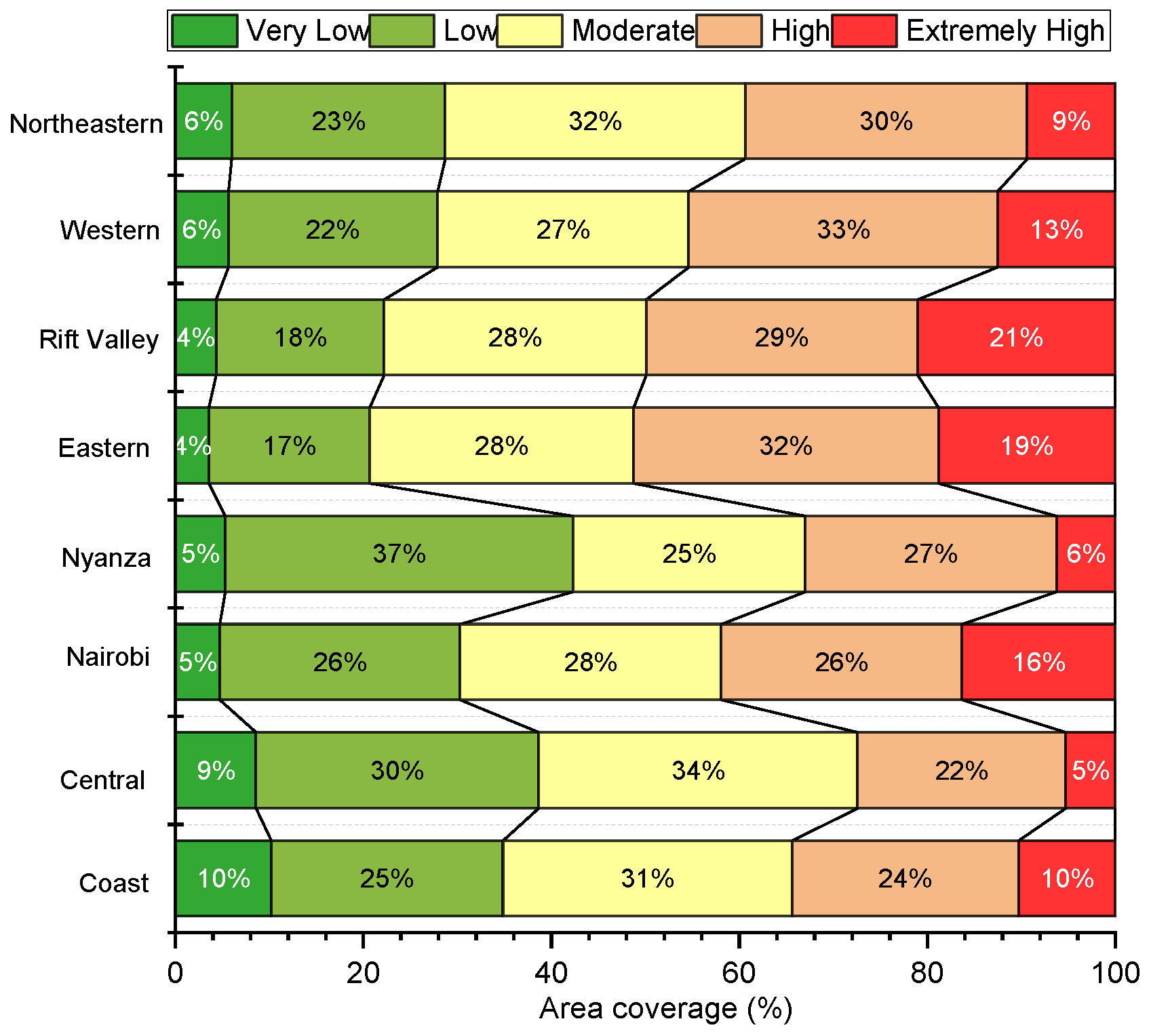
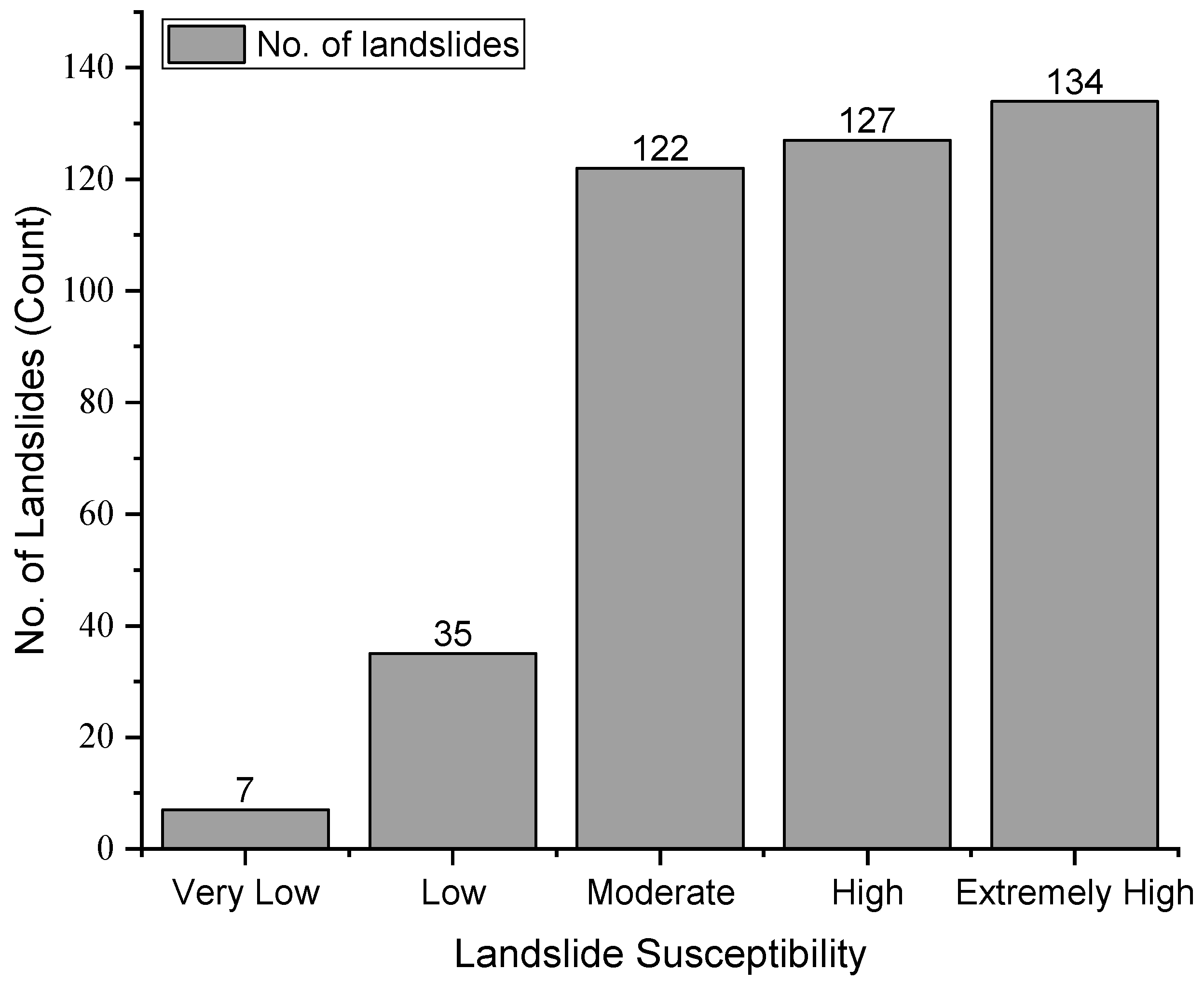
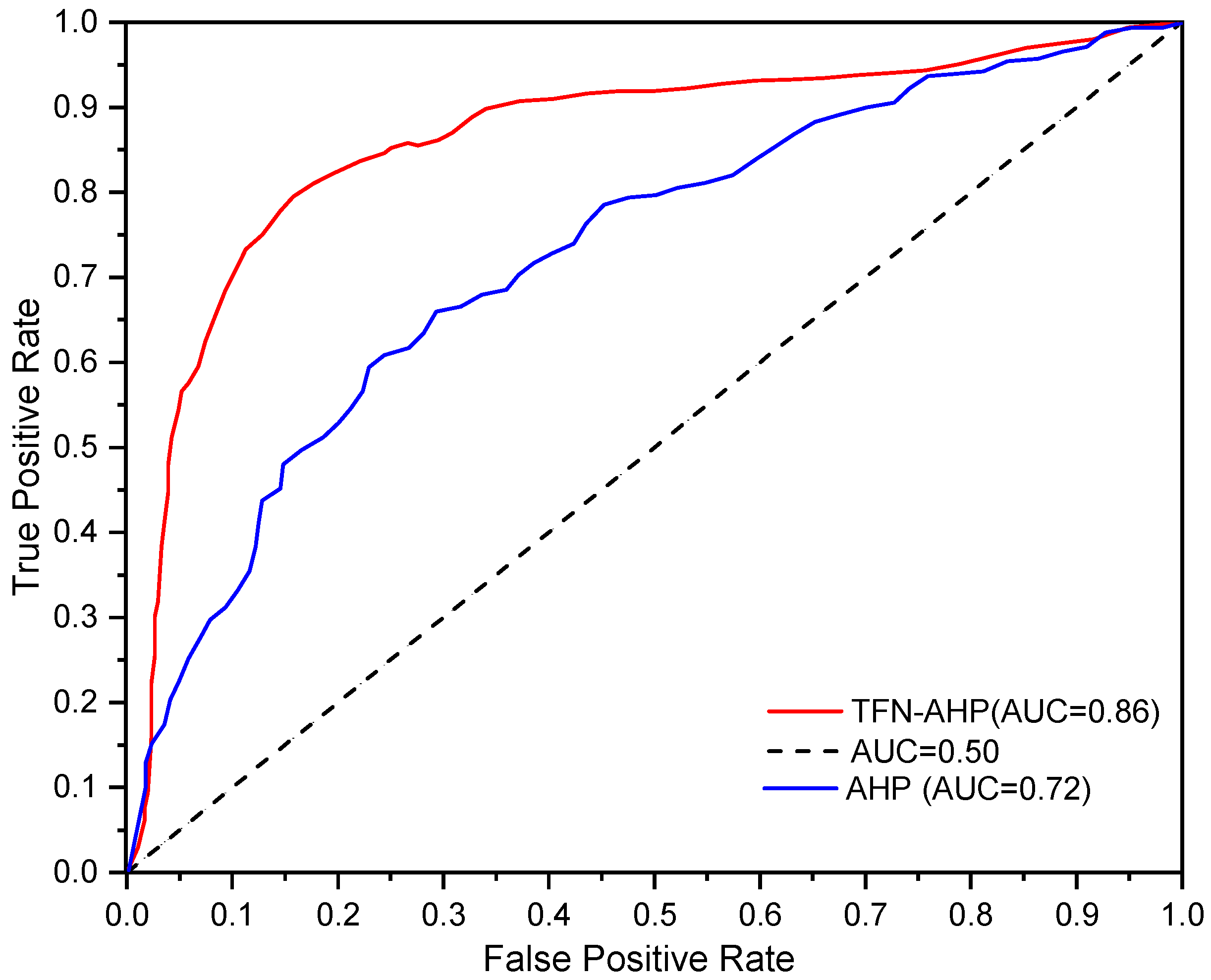

| No. | Country | LSM Method | Cell Size (m) | Landslide Inventory Availability | No. of Causative Factors | Source |
|---|---|---|---|---|---|---|
| 1 | Cuba | Integrating SMCE and AHP | 90 | No | 5 | Abella and Van Westen [21] |
| 2 | Romania | Heuristic Weighting | 100 | Yes | 6 | Bălteanu et al. [22] |
| 3 | Greece | Integrating Landslide Relative Frequency and R-mode | 1000 | Yes | 10 | Sabatakakis et al. [23] |
| 4 | France | Integrating SMCE and Expert Knowledge | 90 | Yes | 3 | Malet et al. [24] |
| 5 | Georgia | SMCE | 100 | Yes | 9 | Gaprindashvili and Van Westen [25] |
| 6 | Turkey | Heuristic Weighting | 500 | Yes | 6 | Okalp and Akgün [26] |
| 7 | Rwanda | SMCE | 30 | Yes | 8 | Nsengiyumva et al. [27] |
| Linguistic Variables | Intensity of Conventional AHP | Reciprocal of Intensity | Triangular Fuzzy Number (TFN) | Reciprocal of TFN |
|---|---|---|---|---|
| Equally Important (EQI) | 1 | 1 | (1,1,2) | (1/2,1,1) |
| Slightly Important (SLI) | 3 | 1/3 | (2,3,4) | (1/4,1/3,1/2) |
| Moderately Important (MOI) | 5 | 1/5 | (4,5,6) | (1/6,1/5,1/4) |
| Very Important (VEI) | 7 | 1/7 | (6,7,8) | (1/8,1/7,1/6) |
| Extremely Important (EXI) | 9 | 1/9 | (8,9,9) | (1/9,1/9,1/8) |
| Intermediate value | 2 | 1/2 | (1,2,3) | (1/3,1/2,1) |
| 4 | 1/4 | (3,4,5) | (1/5,1/4,1/3) | |
| 6 | 1/6 | (5,6,7) | (1/7,1/6,1/5) | |
| 8 | 1/8 | (7,8,9) | (1/9,1/8,1/7) |
| Actual Label | Predicted Lable | |
|---|---|---|
| Positive | Negative | |
| Positive | True Positive(TP) | False Negative(FN) |
| Negative | False Positive(FP) | True Negative(TN) |
| LCF | Land Use | AMP | Aspect | Soil Texture | TWI | SPI | Curvature | Altitude | Landform | Slope |
|---|---|---|---|---|---|---|---|---|---|---|
| Land use | (1,1,1) | (1/3,1/2,1/1) | (1,2,3) | (1/3,1/2,1) | (1/3,1/2,1) | (1/3,1/2,1) | (1/5,1/4,1/3) | (1/3,1/2,1) | (1/3,1/2,1) | (1/5,1/4,1/3) |
| AMP | (1,2,3) | (1,1,1) | (1,2,3) | (2,3,4) | (2,3,4) | (2,3,4) | (1,2,3) | (2,3,4) | (3,4,5) | (2,3,4) |
| Aspect | (1/3,1/2,1) | (1/3,1/2,1) | (1,1,1) | (1/3,1/2,1) | (1/3,1/2,1) | (1/3,1/2,1) | (1/3,1/2,1) | (1,2,3) | (1/3,1/2,1) | (1/4,1/3,1/2) |
| Soil Texture | (1,2,3) | (1/4,1/3,1/2) | (1,2,3) | (1,1,1) | (1,2,3) | (1,2,3) | (1/4,1/3,1/2) | (1/5,1/4,1/3) | (1,2,3) | (1/5,1/4,1/3) |
| TWI | (1,2,3) | (1/4,1/3,1/2) | (1,2,3) | (1/3,1/2,1) | (1,1,1) | (1,1,2) | (1/3,1/2,1) | (1,2,3) | (1,2,3) | (1/5,1/4,1/3) |
| SPI | (1,2,3) | (1/4,1/3,1/2) | (1,2,3) | (1/3,1/2,1) | (1/2,1,1) | (1,1,1) | (1/3,1/2,1) | (1/3,1/2,1) | (1,2,3) | (1/5,1/4,1/3) |
| Curvature | (3,4,5) | (1/3,1/2,1) | (1,2,3) | (2,3,4) | (1,2,3) | (1,2,3) | (1,1,1) | (1,2,3) | (2,3,4) | (1,2,3) |
| Altitude | (1,2,3) | (1/4,1/3,1/2) | (1/3,1/2,1) | (3,4,5) | (1/3,1/2,1) | (1,2,3) | (1/3,1/2,1) | (1,1,1) | (2,3,4) | (1/5,1/4,1/3) |
| Landform | (1,2,3) | (1/5,1/4,1/3) | (1,2,3) | (1/3,1/2,1) | (1/3,1/2,1) | (1/3,1/2,1) | (1/4,1/3,1/2) | (1/4,1/3,1/2) | (1,1,1) | (1/3,1/2,1) |
| Slope | (3,4,5) | (1/4,1/3,1/2) | (2,3,4) | (3,4,5) | (3,4,5) | (3,4,5) | (1/3,1/2,1) | (3,4,5) | (1,2,3) | (1,1,1) |
| LCFs | Si | ||||||||||
|---|---|---|---|---|---|---|---|---|---|---|---|
| SLand Use | SMAP | SAspect | SSoil Texture | STWI | SSPI | SCurvature | SAltitude | SLandform | SSlope | ||
| Sj | Sland use | -- | 1.0000 | 1.0000 | 1.0000 | 1.0000 | 1.0000 | 1.0000 | 1.0000 | 1.0000 | 1.0000 |
| SMAP | 0.1858 | -- | 0.2301 | 0.5237 | 0.5175 | 0.4054 | 0.8836 | 0.6087 | 0.2794 | 1.0000 | |
| SAspect | 0.9753 | 1.0000 | -- | 1.2867 | 1.0000 | 1.0000 | 1.0000 | 1.0000 | 1.0000 | 1.0000 | |
| SSoil Texture | 0.6708 | 1.0000 | 0.7063 | -- | 0.9748 | 0.8960 | 1.0000 | 1.0000 | 0.7685 | 1.0000 | |
| STWI | 0.6915 | 1.0000 | 0.7274 | 1.0270 | -- | 0.9223 | 1.0000 | 1.0000 | 0.7919 | 1.0000 | |
| SSPI | 0.7732 | 1.0000 | 0.8059 | 1.0997 | 1.0000 | -- | 1.0000 | 1.0000 | 0.8721 | 1.0000 | |
| SCurvature | 0.3190 | 1.0000 | 0.3616 | 0.6558 | 0.6453 | 0.5405 | -- | 0.7401 | 0.4138 | 1.0000 | |
| SAltitude | 0.5626 | 1.0000 | 0.6035 | 0.9146 | 0.8926 | 0.8016 | 1.0000 | -- | 0.6664 | 1.0000 | |
| SLandform | 0.9008 | 1.0000 | 0.9288 | 1.2194 | 1.0000 | 1.0000 | 1.0000 | 1.0000 | -- | 1.0000 | |
| SSlope | 0.1146 | 0.9796 | 0.1637 | 0.4773 | 0.4723 | 0.3505 | 0.8585 | 0.5674 | 0.2155 | -- | |
| min{V(Si ≥ Sj)} | 0.1146 | 0.9796 | 0.1637 | 0.4773 | 0.4723 | 0.3505 | 0.8585 | 0.5674 | 0.2155 | 1.0000 | |
| LCF | Weight | Weights for Subclasses | ||||||||||
|---|---|---|---|---|---|---|---|---|---|---|---|---|
| Altitude | 0.1091 | Subclass | <50 | 50–200 | 200–500 | 500–1000 | 1000–2000 | >2000 | ||||
| Sub-weight | 0.06005 | 0.116325 | 0.132193 | 0.332756 | 0.248017 | 0.110659 | ||||||
| Slope | 0.1923 | Subclass | 0–5 | 5–10 | 10–15 | 15–30 | >30 | |||||
| Sub-weight | 0.272576 | 0.071825 | 0.103312 | 0.187974 | 0.364313 | |||||||
| Aspect | 0.0315 | Subclass | East | North | South | Flat | Southeast | Northeast | Northwest | Southwest | West | |
| Sub-weight | 0.061693 | 0.148905 | 0.104221 | 0.035564 | 0.064601 | 0.102414 | 0.153685 | 0.130982 | 0.197935 | |||
| Curvature | 0.1651 | Subclass | Concave | Flat | Convex | |||||||
| Sub-weight | 0.356956 | 0.07303 | 0.570014 | |||||||||
| TWI | 0.0908 | Subclass | 6.8–9.87 | 9.88–12.06 | 12.07–14.68 | 14.69–18.73 | 18.74–34.72 | |||||
| Sub-weight | 0.193617 | 0.145043 | 0.130591 | 0.251617 | 0.279132 | |||||||
| SPI | 0.0674 | Subclass | −2.41–4.61 | −2.41–4.61 | −2.41–4.61 | −2.41–4.61 | −2.41–4.61 | |||||
| Sub-weight | 0.154267 | 0.072107 | 0.236641 | 0.21716 | 0.319825 | |||||||
| Soil Texture | 0.0918 | Subclass | Very clayed | Clayed | Loamy | Sandy | Water | |||||
| Sub-weight | 0.347343 | 0.240127 | 0.064201 | 0.19557 | 0.152758 | |||||||
| Land use | 0.0220 | Subclass | Grassland | Barren land | Bushland | Waterbody | Plantation | Agriculture | Town | Forrest | Swamp | Woodland |
| Sub-weight | 0.121685 | 0.160743 | 0.136464 | 0.059885 | 0.105435 | 0.098511 | 0.069957 | 0.093253 | 0.07247 | 0.081596 | ||
| Landform | 0.0414 | Subclass | Depression | Escarpment | Water | Highland | Hill | Mountain | Plain | Ridges | Valley floor | Foot slope |
| Sub-weight | 0.149353 | 0.175107 | 0.022159 | 0.099969 | 0.069948 | 0.162601 | 0.010686 | 0.210827 | 0.038302 | 0.061047 | ||
| AMP | 0.1884 | Subclass | 0–400 | 400–800 | 800–1200 | 1200–1600 | 1600–2000 | 2000–2400 | >2400 | |||
| Sub-weight | 0.153978 | 0.148163 | 0.038692 | 0.069628 | 0.166877 | 0.198069 | 0.224593 | |||||
Publisher’s Note: MDPI stays neutral with regard to jurisdictional claims in published maps and institutional affiliations. |
© 2020 by the authors. Licensee MDPI, Basel, Switzerland. This article is an open access article distributed under the terms and conditions of the Creative Commons Attribution (CC BY) license (http://creativecommons.org/licenses/by/4.0/).
Share and Cite
Zhou, S.; Zhou, S.; Tan, X. Nationwide Susceptibility Mapping of Landslides in Kenya Using the Fuzzy Analytic Hierarchy Process Model. Land 2020, 9, 535. https://doi.org/10.3390/land9120535
Zhou S, Zhou S, Tan X. Nationwide Susceptibility Mapping of Landslides in Kenya Using the Fuzzy Analytic Hierarchy Process Model. Land. 2020; 9(12):535. https://doi.org/10.3390/land9120535
Chicago/Turabian StyleZhou, Suhua, Shuaikang Zhou, and Xin Tan. 2020. "Nationwide Susceptibility Mapping of Landslides in Kenya Using the Fuzzy Analytic Hierarchy Process Model" Land 9, no. 12: 535. https://doi.org/10.3390/land9120535
APA StyleZhou, S., Zhou, S., & Tan, X. (2020). Nationwide Susceptibility Mapping of Landslides in Kenya Using the Fuzzy Analytic Hierarchy Process Model. Land, 9(12), 535. https://doi.org/10.3390/land9120535







